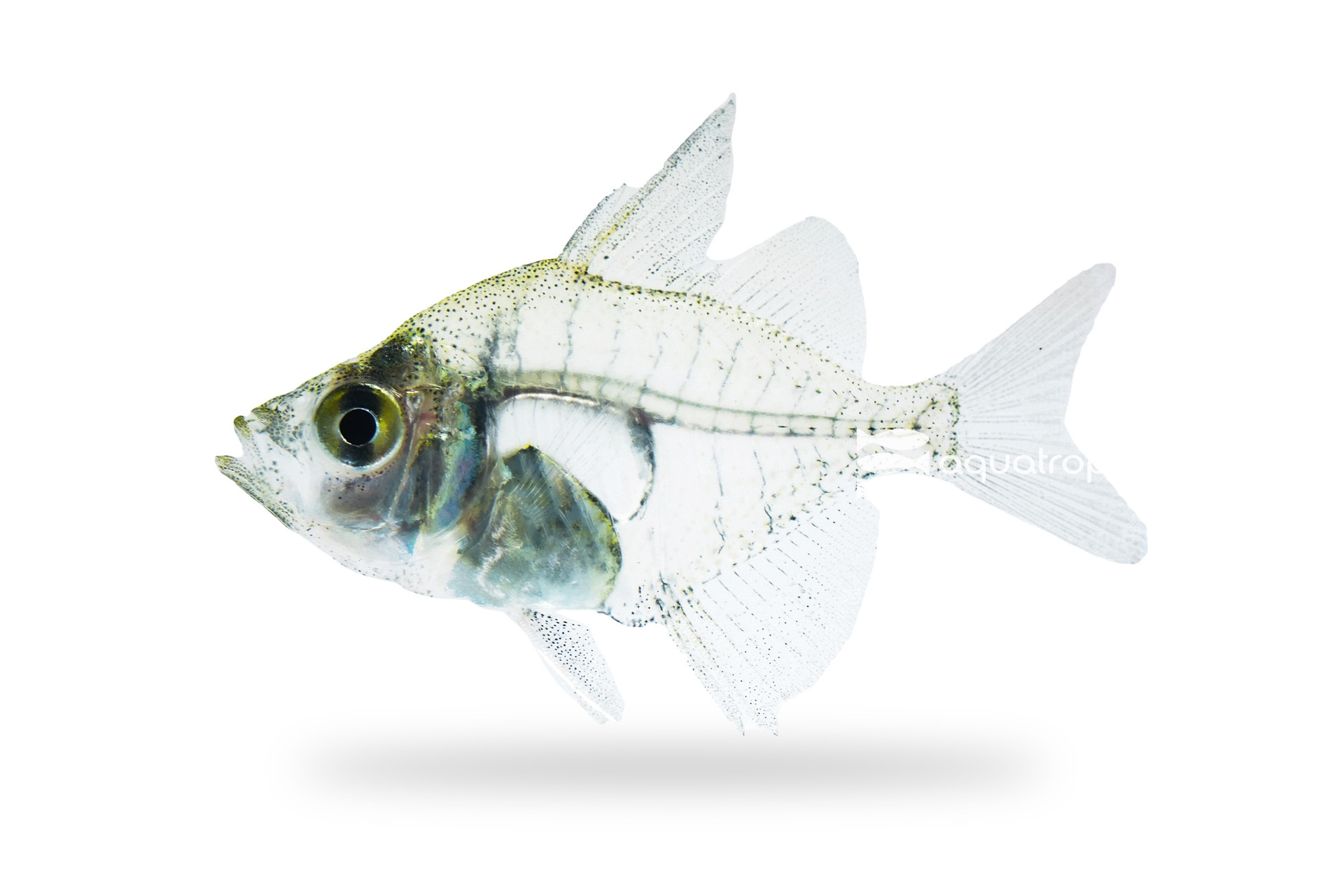Glassfish (Parambassis lala)

Repeat after me: Glassfish live in freshwater habitats, not brackish water habitats.
Though, let’s be a bit more specific about that. The species of glassfish most commonly kept by aquarists is Parambassis lala (along with a few other close relatives), and this species is native exclusively to freshwater ecosystems. It doesn’t require any salt in its waters, despite many aquarium references mistakenly stating so, but there are other species in this family that do come from coastal estuaries and benefit from having salt in their water. Cool, let’s move on.
So what exactly is a glassfish? This is one of those basic questions that doesn’t get asked much by aquarists, but it’s a surprisingly difficult one to give a firm answer to. When you think of freshwater fishes, most belong to one of two major groups. There are things like catfishes, tetras, and minnows, which come from an enormous lineage known as the Ostariophysi. They mostly have soft, spineless fins and a unique configuration of their jawbones called the Weberian Apparatus.
The other major lineages, very distantly related, are the Ovalentaria, which was first recognized less than a decade ago as a major branch among the perch-like fishes. Included here are a number of very diverse and very common freshwater and marine fishes found all over the globe, many of which should be familiar to aquarists. The largest and most important of these are the cichlids, but it’s here that we also find the rainbowfishes and halfbeaks and killifishes and livebearers, as well as damselfishes and dottybacks and blennies and grammas and jawfishes on the marine side. It’s truly an immense and variable group of fishes, and, somewhere among this enormous biodiversity sits the glassfishes, classified in their own family, the Ambassidae.
We still don’t have much of an understanding of who they are most closely related to among the ovalentarians, as the genetic studies conducted thus far have failed to provide strong evidence and, morphologically speaking, this family is quite distinct from everything else. They are an enduring mystery.
But enigmatic though they may be, they have been kept in aquariums for decades now. When cared for properly (i.e. not adding unnecessary salt to their water), these can be a hardy and unique addition to a peaceful community aquarium. Their reputation as delicate fishes is largely unwarranted and relates to the rampant misinformation about their preferred water parameters and the damage caused by a few unscrupulous individuals who inject fluorescent dye into the transparent body of these fishes. This barbaric practice should be repudiated in the strongest way possible.
Parambassis lala is a lovely and small species of glassfish, reaching a maximum size of just over an inch in length. It is best kept in groups, and typically must be fed with frozen or live foods, as this fish tends to avoid dry foods. Males develop a bit more color along the edges of the dorsal and anal fin, present as a thin blue highlight, and both sexes feature dark vertical bands, which helps to identify this species from some of the other similar examples that on occasion sneak into aquarium exports. A dense planted aquarium is the ideal environment, and, when conditioned well, it is not uncommon for breeding to take place. The eggs are attached to vegetation, though the young are reported to be challenging to raise.